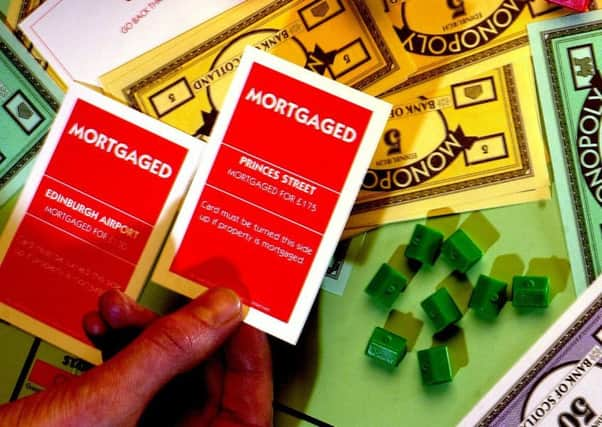Warren Shute: Are you caught in an endowment trap?


The Financial Conduct Authority released a notice about their concerns on this subject at the beginning of this year because 2018 shows a peak in the number of mortgages coming due, especially interest-only mortgages. There are further peaks due in 2027 and 2032.
We’re talking big numbers here: 1.67 million interest-only or part-interest mortgages are in the marketplace at the moment, which represents nearly 20 per cent of all outstanding mortgages in this country. If this doesn’t affect you, it’s likely to affect some of your friends and family. So how should you handle the situation in advance of the end of your term?
Advertisement
Hide AdAdvertisement
Hide AdInterest-only mortgages were popular before 2007 and the financial crash, with people looking for more affordable repayments and thinking that house prices were always going to keep going up.
An interest-only mortgage is one where you pay only the interest and not the mortgage balance itself. Let’s say you have a £100,000 mortgage charged at 5 per cent annual interest, at the end of the year you’ll have paid £5,000 but you still owe the £100,000; fast-forward 25 years and you still owe that £100,000.
If you’ve got one of these mortgages, your biggest concern is: how are you going to pay your mortgage back? Don’t panic, just make sure you have a strategy in place – here are your options.
Evaluate (and re-evaluate) your original thinking
Step 2 of my book The Money Plan is to get financially organised, by knowing what you’ve got: your assets and liabilities, your income and expenditure. What assets do you have that you can offset against your final capital payment? And is your original strategy still the right one?
Most people with an interest-only mortgage should have set up an investment or repayment vehicle to run alongside it – possibly a PEP or an ISA, or even an endowment policy or personal pension plan – giving them a lump sum to pay off the borrowing at the end of the term. If you did, you have a few options available:
Option 1: Cash in and switch to repayment terms
Whatever your strategy when you took the mortgage, you should re-evaluate it now. Why? As a rule of thumb, if you have an endowment policy or ISA that was put in place to repay the mortgage at the end of your term, it’s probably advantageous to cash in now instead and pay off some of the balance. At the same time, you should switch over to a repayment mortgage that will see your loan completely cleared at the end of its remaining term.
An important note to remember: if you’ve had a policy running for less than ten years then check for any tax liability or surrender charges before you cash it in; if in doubt, seek professional advice first.
Doing this is probably your cheapest long-term option. You’ll have a smaller remaining balance, though you’ll also have higher monthly payments. If you find the new premiums too high, ask if you can extend the term and push it out a little longer. Bear in mind not to go too far into the future – don’t extend debt past your retirement date.
Advertisement
Hide AdAdvertisement
Hide AdIf the new monthly repayments are still too expensive then it may be necessary to leave some of the mortgage on interest-only – but remember that money will still be owed at the end of your term, don’t bury your head in the sand. Try to chip away at it along the way if you get bonuses, commissions or other extra cash.
Option 2: Maintain your position
If your repayment vehicle is on track and you’re happy with it, then you might choose to maintain your current status quo on the understanding that your strategy will cover your final lump sum payment. But do keep an eye on it and keep it under regular review, this is a higher risk approach. You need to be comfortable taking that element of risk.
Option 3: Switch and maintain!
If you can afford to switch the interest-only mortgage to a repayment one over the remaining term, plus keep your savings vehicle going, then that will give you a nice addition to any retirement funding or plans you have. But for many, switching AND continuing the investment vehicle will be expensive and unaffordable.
Option 4: Cash in and downsize
What you might have to do at the end of the term (or even before it so that you’re not under pressure) is to sell your property. Downsizing might have always been part of your strategy, or it might be something forced upon you by your finances.
Either way, if you cash in your investment vehicle now and pay off some of your mortgage, then when it’s time to downsize you’ll have lots of equity, potentially enough to buy a smaller property and have some money left over.
Warren Shute was named the UK’s Financial Professional of the Year (2017) and his first book, The Money Plan, is now available on Amazon. Get more money tips at www.warrenshute.com. @warrenshute